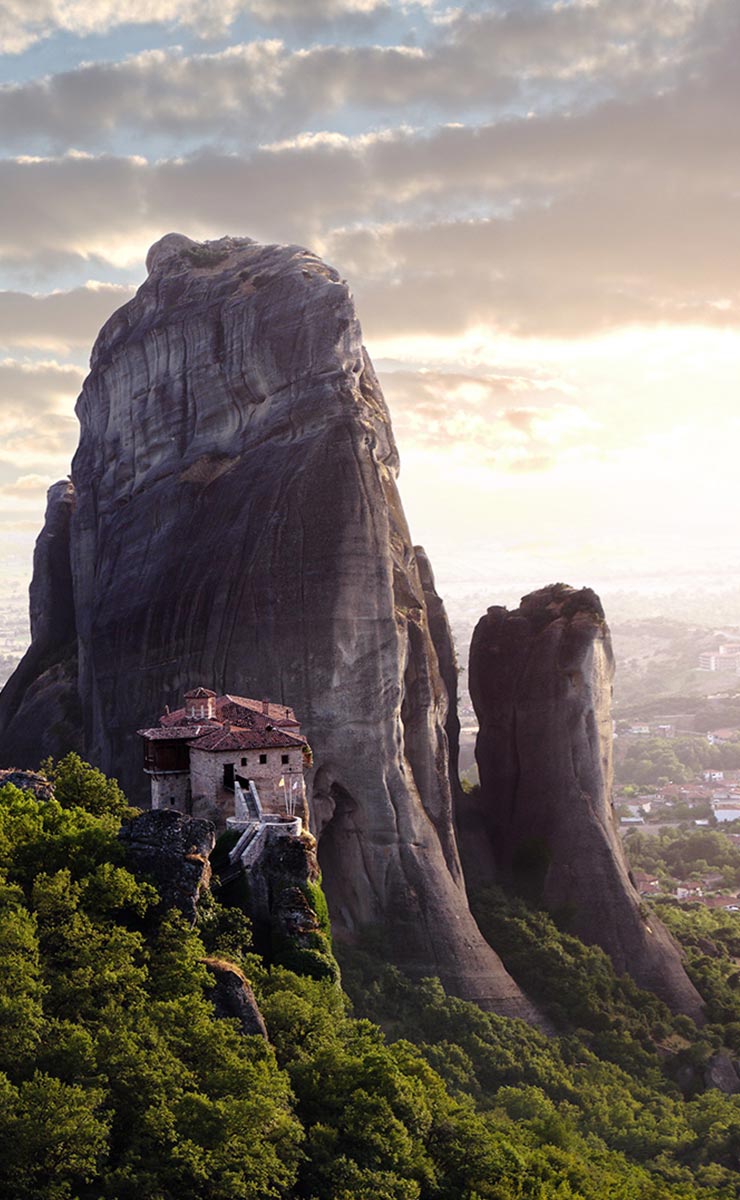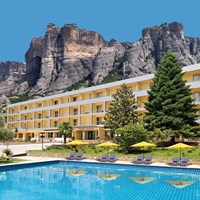Over the centuries the Meteora monasteries were seed-beds of holiness for a multitude of monks, a bastion of faith and civilization, treasuries of the values and virtues of the Greek Orthodox spirit. Here, the unparalleled natural wealth of Meteora coexists in absolute harmony with discreet human intervention; intense spiritual striving and devotion to God is juxtaposed with a love of beauty and culture; the harsh ascetic way of life stands side by side with the refinement of art and artistic creativity, with the sole purpose of glorifying the Creator.
The valuable ascetic tradition of Meteora, the large number of saints who have lived on the hallowed spires, its rich liturgical life and many relics, which are its most precious treasures, together make the monasteries vital centres of Orthodox spirituality.
Meteora is an otherworldly ‘city of rocks’, made up of more than a thousand outcrops in western Thessaly between the towering peaks of Pindus and the Antichasia mountains. Its sublime beauty cannot be conveyed in words or pictures. The soaring monoliths of more than four hundred metres in height seem to have been expressly created by God for the bold ascetics who would seek the ideal place in this tranquil setting to devote themselves wholly to prayer.
The landscape of Meteora and ascetic life are extremely similar. Prayer – deep, all-encompassing prayer – needs a place like Meteora. Somewhere harsh and imposing. It needs bare rock and sky. Lots of sky! (Athanasios Kouros).
Hotels in Meteora
As one of the Divani Collection luxury hotels in Greece, Divani Meteora hotel offers its guests the opportunity to enjoy traditional Greek hospitality in a contemporary setting
It’s in a friendly atmosphere that the owners of Alsos House will welcome you in their lodging located almost at the foot of Meteora in the old town of Kalambaka, till the city center (5 minutes walk)
The name ‘Meteoron’ was originally used by St Athanasios of Meteora, the founder of the Monastery of the Transfiguration (Metamorphosis), to describe the ‘Broad Rock’ (Platys Lithos), the pinnacle that he was the first to climb in 1343/4 AD. The term was later generally adopted since ‘meteoros’ means suspended in the air, floating. In the Life of St Athanasios, we also find the term ‘city of stone’. Over time a large number of hermitages and monasteries were built on these rocks, making Meteora the second largest monastic complex in Greece after Mount Athos.
The most probable account of the formation of these rock pillars is that it was the result of a cone-shaped delta, that is, a mass of rocks, sand and sediment carried by a river and deposited in the ancient lake of Thessaly. Twenty-five million years ago this river entered the sea near present-day Kalambaka. When the water mass found an outlet in the Aegean Sea, following the separation of Mount Olympus from Mount Ossa, the cone-shaped delta that had accumulated was eroded by earthquakes, wind and heavy rainfall, and split to form hills and cavernous rocks of different shapes.














